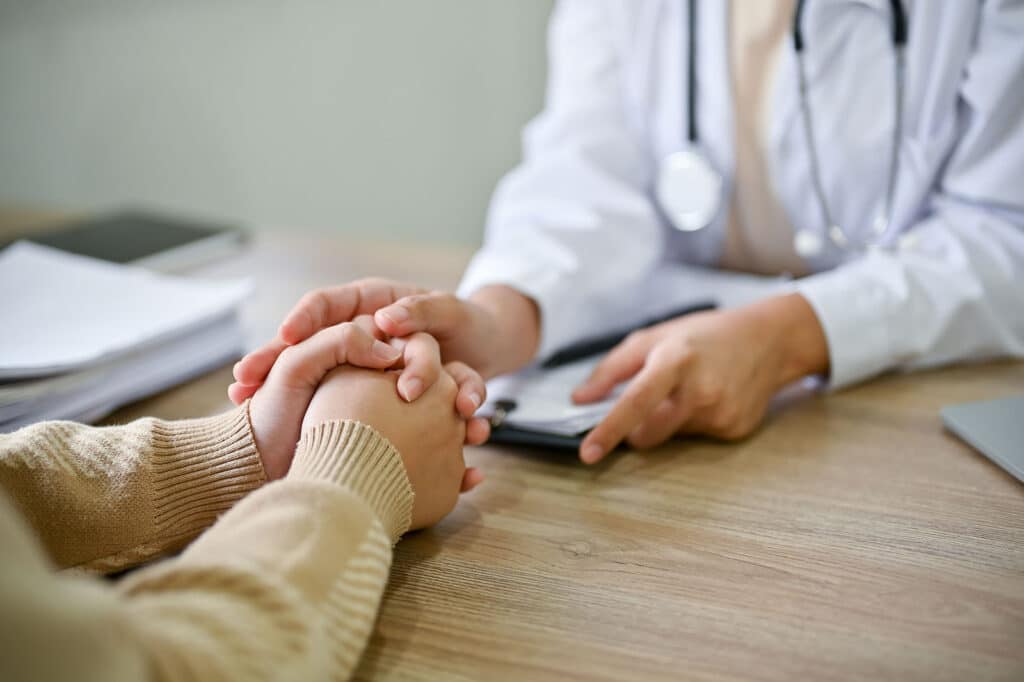Physical therapy is a treatment method in which someone who is struggling with addiction can achieve measures of success, in addition to options such as psychotherapy and medication.
This type of treatment involves some sort of physical activity or physical contact. One example would be regular massages to help related areas of the body relax and to improve circulation. Exercise is another form of physical therapy. Examples of that include running, lifting weights and doing yoga.

Table of Contents
Understanding Addiction
Addiction occurs when you have a significant urge or even an outright need to continue doing something. The most talked-about types of addictions involve drugs, alcohol, smoking and gambling, but essentially anything can be the source of an addiction, at least mentally. Other examples include addictions to shopping, work, video games, food and pornography.
As far as addictions to drugs or alcohol are concerned, it is important to consider why many who are suffering from them are now in poor physical health for an indirect reason: that addiction consuming so much focus that they no longer care about how healthy they are. For example, perhaps going on daily walks no longer occurs now that an addiction has taken hold.
Another common situation is a person who is suffering from pain, such as after undergoing surgery or off-and-on back pain, being prescribed opioids and getting addicted to them. Physical therapy can help this person learn how to handle and lessen that pain in a healthier way, which is particularly important as there is little evidence that opioids effectively help with chronic pain.
Meanwhile, others use alcohol to mask physical or mental pain that they have been experiencing, pain that physical therapy can help counteract.
An addiction to drugs or alcohol also tends to result in a weakened immune system – i.e. experiencing flus and colds more often than would be the case if there was no such addiction. Also, pre-existing conditions, such as heart disease or diabetes, are generally worsened by addiction.
Role of Physical Therapy in Addiction Recovery
Engaging in physical therapy can have a tremendous effect on an individual’s overall recovery, on helping that person get themself into a better place in all areas of their life.
One of the main reasons why this is the case is because it even has the potential to replace an addiction in the person’s mind. For example, some essentially transition from being addicted to alcohol to going on regular runs – i.e. replacing a destructive habit with a healthier option.
Physical therapy will also help the patient experience greater mobility and movement and lower their risk of getting injured or needing surgery in the future. That then decreases the likelihood of being prescribed painkillers, something that should be avoided whenever possible.
Another important consideration to keep in mind is that someone who is experiencing detox will generally be undergoing a tremendous amount of pain and discomfort at that time. Physical therapy can help reduce those elements of detox without needing to involve opioids or, if they are necessary, reducing their use.
Physical Therapy Techniques Used in Addiction Treatment
Several physical therapy techniques can be utilized in addiction treatment. Here are a few.
Exercise has been shown to not only improve a person’s physical condition and reduce the pain that they are feeling on a day-to-day basis, but it also tends to result in an improved mental state. An increased ability to focus and fewer instances of brain fog are also reported by many who regularly exercise.
Massage is a physical therapy technique that provides physical benefits, such as reduced muscle tightness and improved flexibility, as well as mental ones. Examples of the latter include decreased levels of cortisol and increases in serotonin and dopamine.
In fact, both exercise and massage have been shown to decrease stress and anxiety, which is especially relevant for those battling an addiction as increased levels of stress and anxiety are common side effects of that battle.
Another physical therapy option to consider is acupuncture. The use of very fine needles to stimulate the nervous system can result in improved blood flow. Many report that this form of physical therapy has helped them better handle withdrawal symptoms, depression, anxiety and physical pain.
Some are helped by learning how to habitually adopt an open, relaxed posture, one that is also physically good for the back and other parts of the body. Doing so can play a significant role in reducing the panic that often accompanies recovering from an addiction.
Diaphragmatic breathing has similar benefits. That is because how we breathe communicates to our brain if we are in danger, and many who are suffering from an addiction often breathe like they are experiencing a “fight or flight” response, and that mindset is then communicated to the brain. Yoga can help with this.
Challenges and Limitations
Of course, as with all things, there are challenges and limitations to consider.
One of the most important is that realistic expectations should be set. In other words, if you are looking to start running, that is great, but be wary of planning to run a marathon in a couple of months if you have not done much exercise in the last few years. Ignoring that warning invites injury.
Also make sure to communicate any pain that you may experience during physical therapy. Some types, such as a healthy burn, are not necessarily bad, but others absolutely should not be pushed past. Be wary of the saying, “no pain, no gain.”
And keep in mind that the benefits of physical therapy are often more long-term in nature and that how effective a form of it is will vary from person to person, sometimes significantly.
Integrating Physical Therapy with Conventional Addiction Treatments
Ensure that physical therapy is just one part of your recovery and that you are focusing just as much on other elements of it. In other words, make sure to combine the benefits of physical therapy with the ways that engaging in activities such as psychotherapy, support groups and medication can help you recover.
Meditation and mindfulness in particular can be beneficial, not just in helping you recover in a holistic, whole-body way but also in helping you get the most out of your physical therapy. So can nutrition education and putting that knowledge into action, especially since many who are suffering from addiction tend to experience worse nutritional intake as mental focus has turned from that.
You should ensure that your entire treatment, incorporating both physical therapy and conventional addiction treatments, is the best for your situation and for your recovery style.
Conclusion
Physical therapy can play a tremendous role in recovering from an addiction to drugs or alcohol or, for that matter, an addiction to anything. This is both through direct physical and mental benefits and by helping the individual turn their focus away from something destructive and towards healthier options.
That said, keep in mind the challenges and limitations that exist with adopting physical therapy treatment methods to ensure that they are being utilized in a healthy way that will stand the test of time. And make sure that physical therapy is just one part of a comprehensive and holistic approach to your treatment.
To learn how we can help you recover from addiction, including through the use of physical therapy, reach out to Allure Detox, a drug and alcohol detox center that is located in West Palm Beach, FL.
FAQ
Is recreational therapy the same as physical therapy?
Published on: 2020-04-24
Updated on: 2023-12-27


